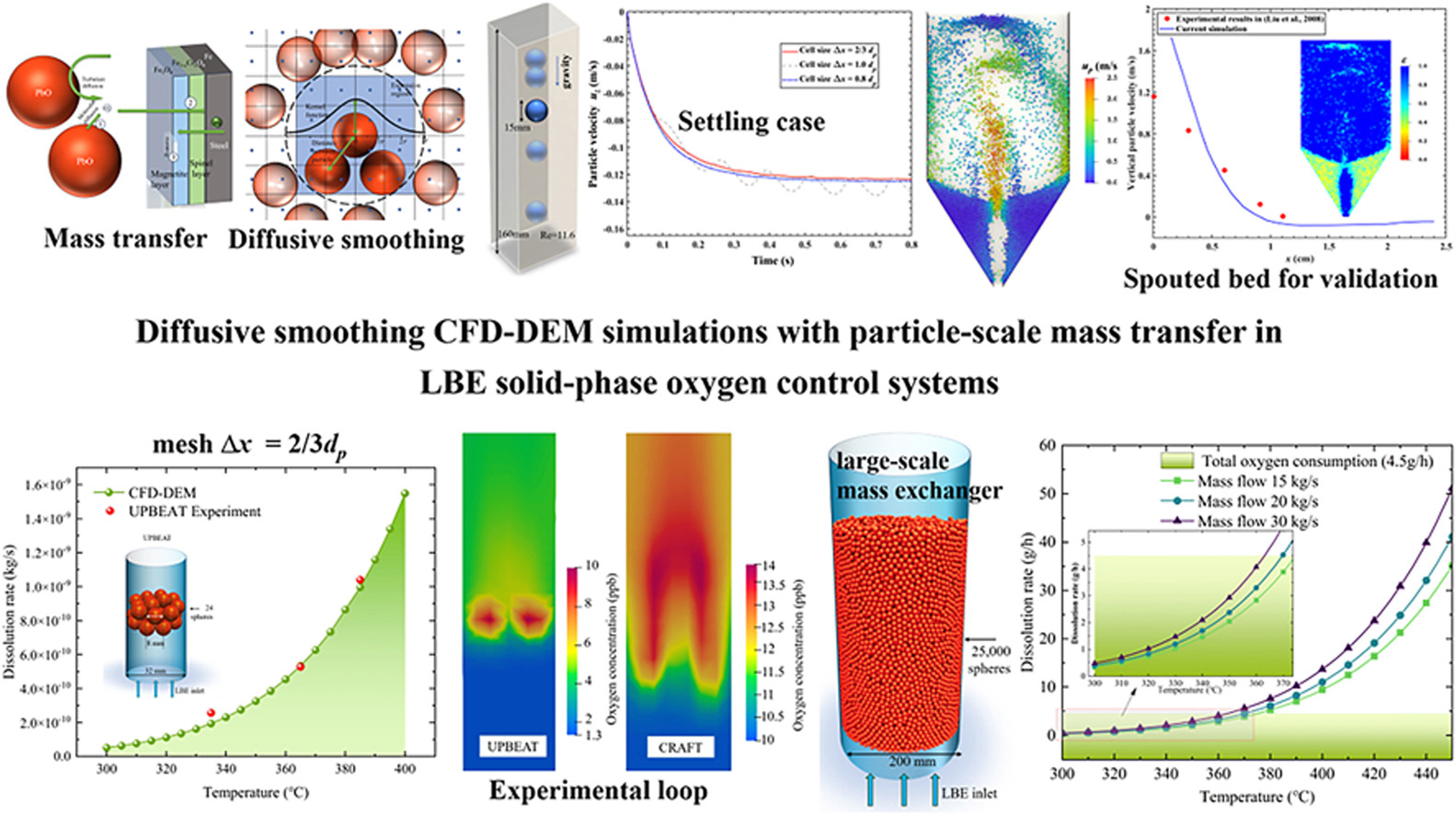• Diffusive smoothing method is proposed for coupling with CFD-DEM simulation of particle-scale mass transfer behaviors.
• Current simulations give a satisfactory prediction of mass transfer in the LBE solid-phase oxygen control systems.
• A large-scale mass exchanger achieves a dissolution of 5.28–23.74 g/h and meets the consumption of a nuclear reactor.
The coupled CFD-DEM simulations are widely recognized as a powerful approach for analyzing various particle-fluid systems. In lead-bismuth nuclear reactors, the liquid lead-bismuth eutectic (LBE) alloy is employed as the coolant, and the solid-phase oxygen control is a key technique for corrosion mitigation. In this work, diffusive smoothing CFD-DEM simulations are performed to investigate the particle-scale mass transfer behaviors of LBE solid-phase oxygen control loops. The dissolution of the lead oxide particle within the mass exchanger serves as the source term of the mass transfer processes. In the current model, the fluid flow, particle motion, particle-fluid interaction forces, and the mass transfer of oxygen concentration in LBE are incorporated in the governing equations. When the CFD cell size is smaller than the particle diameter, the diffusive smoothing method is proposed to calculate the void fraction field. Compared with the experimental results, the numerical simulations give a satisfactory prediction of the flow dynamics and particle-scale mass transfer. In the small-sized experiment, the total dissolution rate is about 0.0031 g/h at 380 °C, and it is notably lower than the oxygen consumption in a full-scale megawatt-level lead-bismuth reactor. A large-scale mass exchanger is designed, and the numerical simulations indicate that the oxygen control system achieves a dissolution rate ranging from 5.28 to 23.74 g/h at temperatures of 380–420 °C. It is sufficient to meet the expected oxygen consumption of 4.5 g/h in the nuclear reactor. The diffusive smoothing CFD-DEM approach provides a robust tool for the design and optimization of oxygen control loops of advanced lead-bismuth fast nuclear reactors.

